I used to be a vegetarian,” Amy Jackson says during my visit to their tillage and lamb farm in Lacka, Co Tipperary.
“Oh, me too,” is my response. Growing up on a farm; a child sometimes becomes attached to the “end product” – that was my reason for giving up meat as a teenager. But for Amy, an individual who seems to radiate kindness, a deep respect for animals was her main reason for abstaining. Now, she eats meat if she knows where it comes from and how the animals were raised.
“I still feel bad about eating meat, to an extent,” she says. “But I feel better knowing we look after our animals the way we do.”
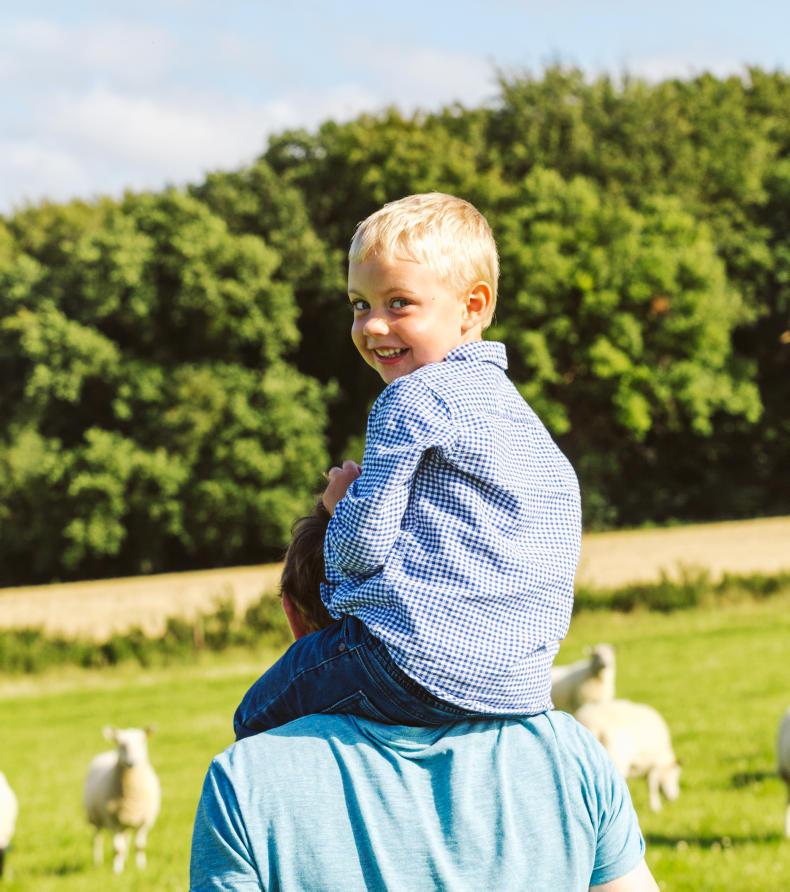
Adam Jackson keeps an eye on the ewes. \ CJ Nash
Traceability and access to local, high quality foods is increasingly important to many Irish consumers – whether it’s the grain used to make the flour for bread or the meat on restaurant plates. The Jacksons are farming and producing food for this target market; taking their once-commercial tillage farm and transforming the landscape to a mixed farm producing certified organic cereals and lamb.
They grow barley, which goes into a single-origin cask whiskey at Waterford Distillery (they have been supplying the distillery for two years, which means their whiskey is not yet available for purchase), oats for Flahavans and – of course – they raise lamb, which is certified under the Bord Bia Sustainable Beef and Lamb Assurance Scheme. These elements, though different, work in harmony and fit the existing landscape.
Organic matter
“My brother, Alan entered organic in 2009,” says Ross. “I sat down with him and looked at all of our options. The goal was to have a sustainable and viable farm enterprise which would work with a full-time off-farm job. Alan works off the farm as an engineer and organic farming ticked all the boxes. It can be low input in terms of work and costs with relatively high returns.”
Ross and Alan’s parents split the farm into three so their father could continue to farm while the twin brothers independently farmed their own section. Alan has also been supplying Waterford Distillery and Flahavan’s for several years. Ross believes organic conversion works well for tillage farms.
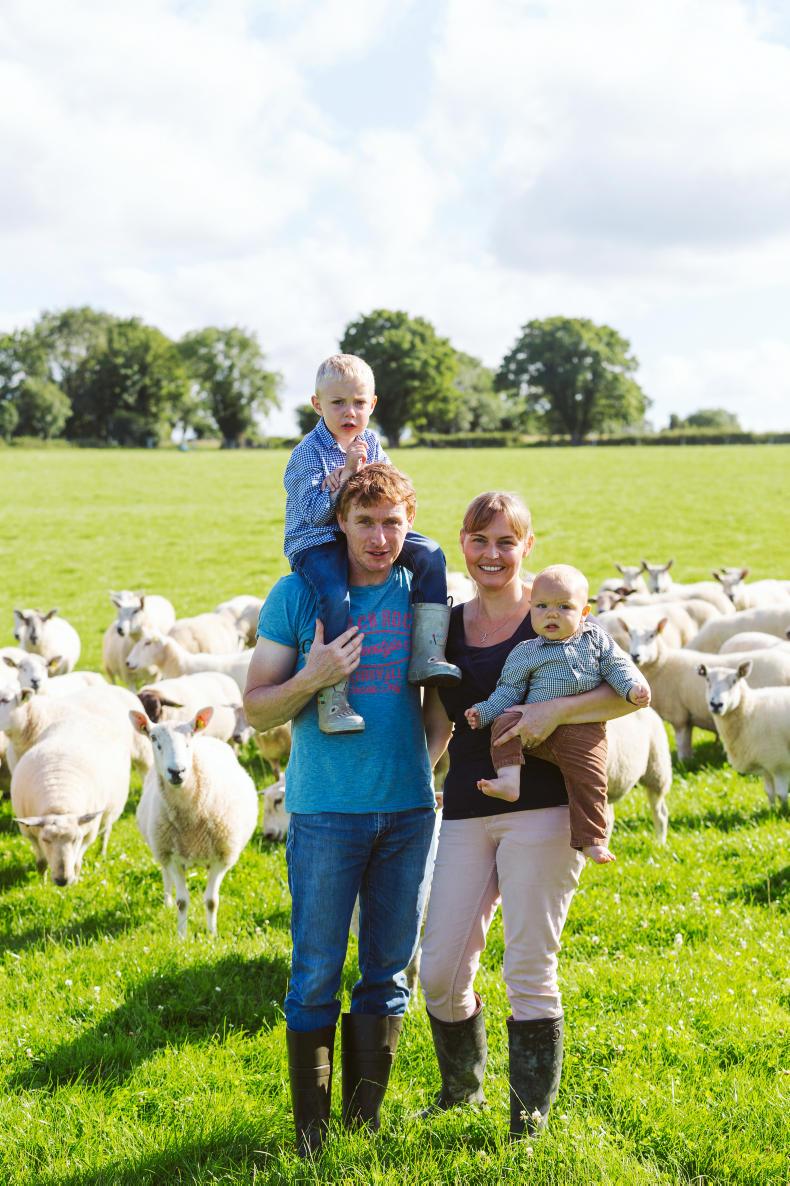
The Jackson Family with their flock. \ CJ Nash
“It’s a two-year conversion period,” he says. “We started ours in 2015. [I think] tillage gives the best return for organic. There’s still a big opportunity for more farmers to become organic and receive a premium for growing organic oats.
“[Due to high demand for certain crops], for anyone going organic who has land good enough to plough, the obvious choice is oats and barley; with barley you probably end up getting a little bit less in yield [than with oats] but a higher return per tonne, so it balances out financially.”
The picturesque north Tipperary farm includes 5km of hedgerow and five acres of native woodland. The Jacksons sequester carbon during the winter months by growing forage crops and also grow herbal lays on which the sheep graze. The crops grown on their 120ac are rotated regularly. All of this ensures soil health, plenty of grazing ground for their sheep and increased biodiversity on their land.
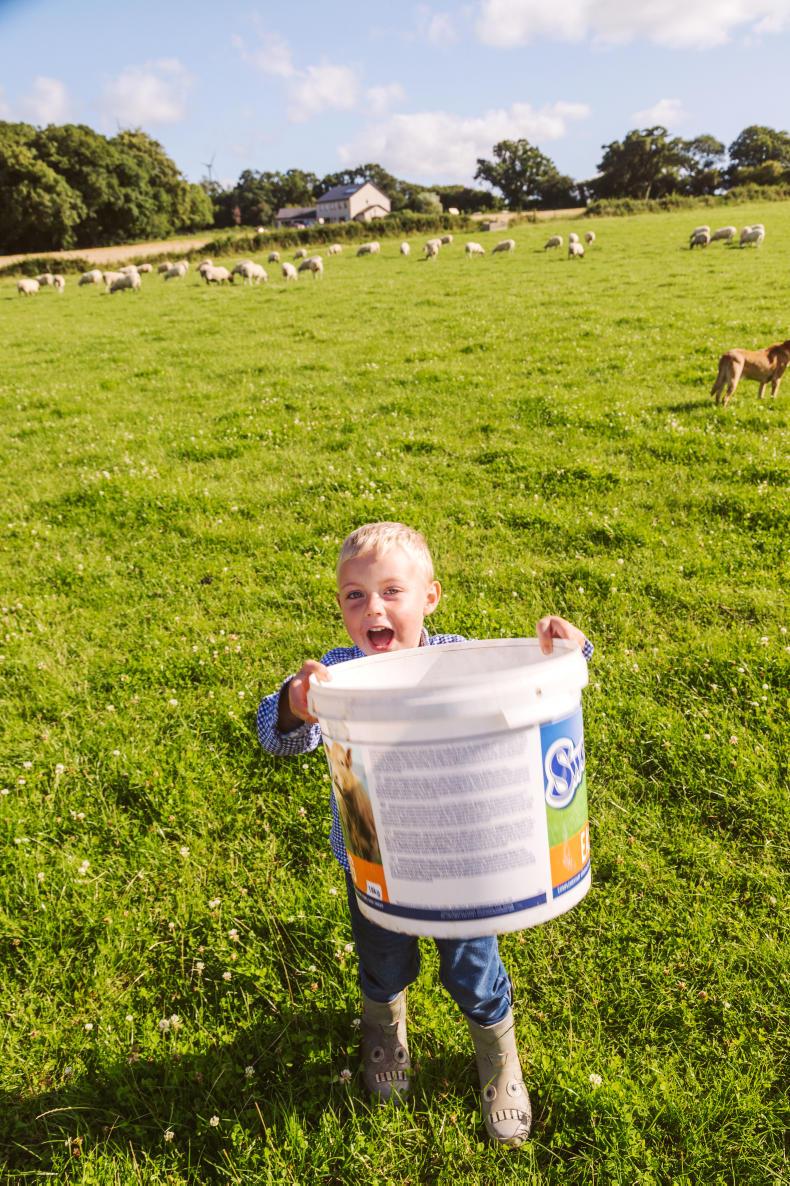
Four-year-old Adam Jackson loves to help mam and dad on the farm. \ CJ Nash
“I work as an agricultural consultant, so I have seen a lot of alternative enterprises and knew organic would suit our farm,” Ross says.
“The basis is: you need a good rotation. We sow our crop and as soon as it’s harvested, we put in a cover crop. The idea is to keep the biology of the soil going. We then plough that up again and sow another tillage crop. We do that for about three years and then it goes back into grassland for about three years. We put in a lot of clovers, plantain and different herbs for the sheep. They have anthelmintic properties, so you don’t have to dose the sheep as much.”
Premium products
For an environmentalist like Amy, this is a win-win situation – maintaining the sustainability of their environment while providing three unique, premium products. The Waterford Distillery whiskey made with their barley will have a code on each bottle which can be used to access specific details about the whiskey, including the field where the barley grew. As for the lamb, this is the first year they are selling direct to the customer.

The Jackson Family: Ross, Amy, Adam (4) and Luke (seven months). \ CJ Nash
“For my own interests, I really appreciate having locally produced food from a sustainable system,” she says. “We’ve always kept lamb for ourselves and family; this is the first year we’ve opened it up to the public. It goes to a local abattoir and the meat is hung for around eight days; there’s no comparison in flavour with a lamb that’s been hung.”
It’s basic, but it’s delicious; you don’t need to go crazy with flavours
“I really love our lamb; we get excellent feedback from our customers,” Amy says. “We’re a busy couple, we have the two small boys. All we ever need to do [with most of our cuts] is add a bit of olive oil, salt and pepper and in the oven it goes. It’s basic, but it’s delicious; you don’t need to go crazy with flavours.”
Spiritual ties
Amy and Ross currently have 120 ewes and will keep around 30 ewe lambs this year. They keep five rams and they have a closed flock, meaning they don’t regularly introduce new animals from outside sources. They mainly keep two different breeds of sheep (homebred Border Leicester crosses and Charollais crosses) and put one breed of ram in with the opposite breed of ewe, which maintains genetic diversity.
“My godmother has 1200 ewes [on her farm in England],” she says. “She shears and lambs them all herself. She just has amazing energy. As a teenager, I helped her for a little while, but I can’t say I was a great help – that was when I knew nothing about sheep! She tolerated me and I got to enjoy the best bits of lambing time – the cute parts.”
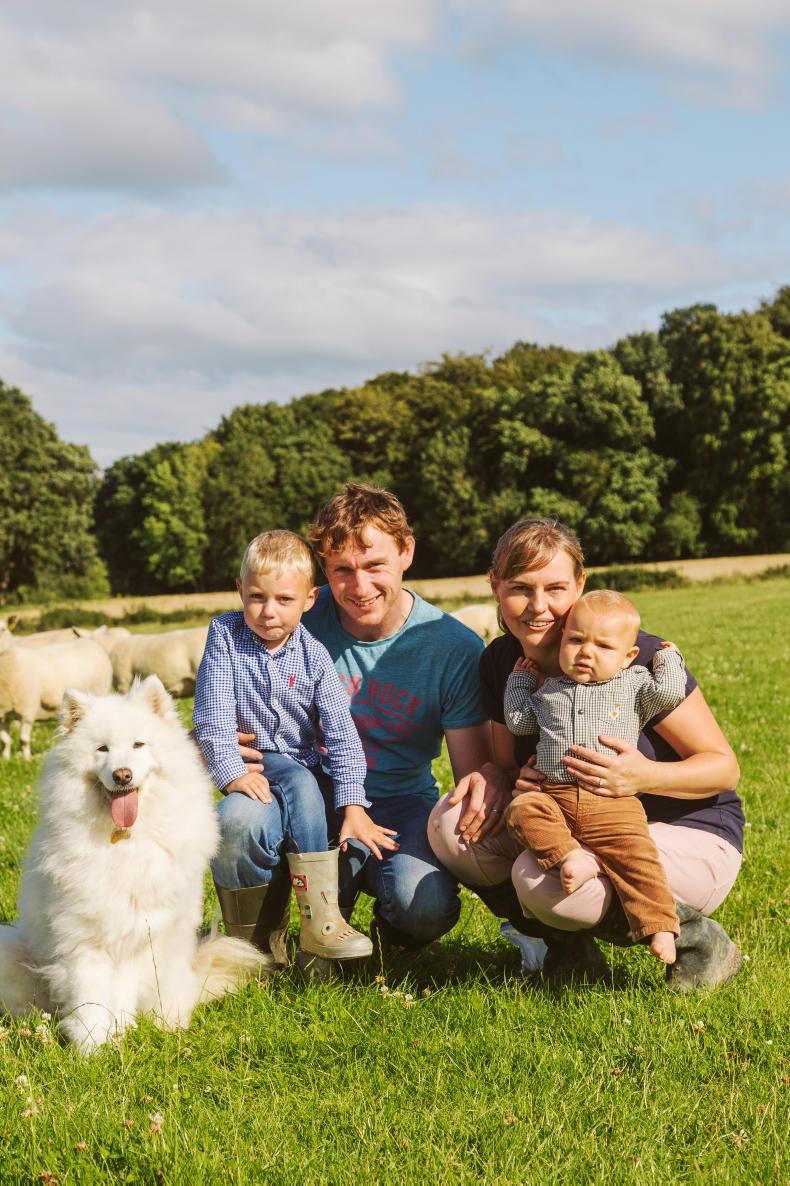
The Jackson Family on their certified organic lamb and cereal farm. \ CJ Nash
“It never occurred to me that I would be a farmer someday,” she continues. “Getting our own flock was a dream come true for me. It’s a really proud moment when one of our homebred ewes has her first lamb. You see the full circle; it’s quite special.”
Seeing green
Converting a conventional farm to an organic rotational system wasn’t easy, but Ross says it helped to have fairly fertile land to start with.
“This farm was 120ac of conventional tillage – no fencing, it wasn’t geared for livestock,” he says. “[In some ways], the commercial tillage work was a lot easier. Now, there’s more work, but I think we enjoy that. There’s a big turn towards sustainability [in agriculture] – it’s not just the right thing to do; people are realising they can make money.”
We’re all for people connecting with the producer
Besides farming and consultancy, Ross lectures in Gurteen Agricultural College and delivers Farm Safety Courses in conjunction with the Irish Farmers’ Association (IFA). He and Amy enjoy showing their farm to other farmers and students as an example of organic farming in action. Amy – who also works in Gurteen College – believes if more of the general public spent time on sustainable Irish farms, it could challenge preconceived notions regarding meat and agriculture.
“We’re all for people connecting with the producer,” she says. “We had a farm walk last year (with Teagasc) and I love to do those kind of events from the lamb point of view; for people to come and see how animals, agriculture, and the environment can all work in harmony together.”
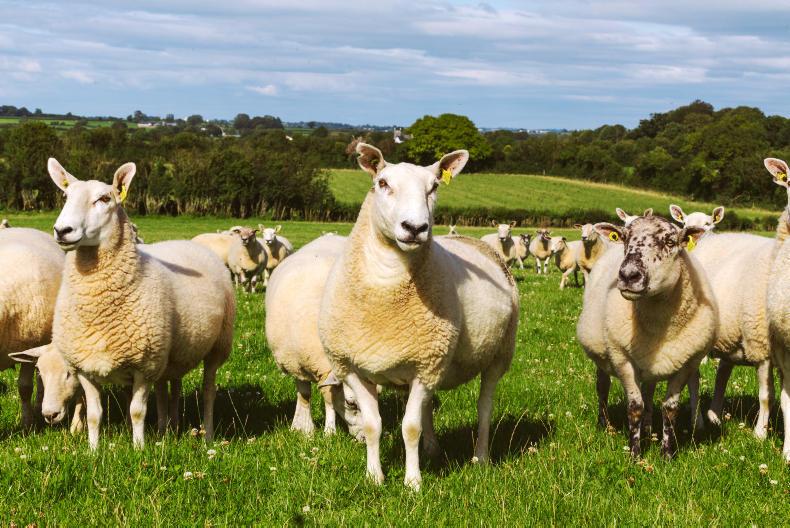
Some of the sheep at Lacka Organic Lamb. \ CJ Nash
Lacka Organic Lamb is seasonally available from June to November. It can be ordered through Lacka Organic Lamb on Facebook, Instagram or by telephone (087-912 4309) but advance notice is needed, because they do not store frozen lamb.
Read more
Murky waters mean challenges ahead for seafood
Adventures in small holding: vegetable growing
I used to be a vegetarian,” Amy Jackson says during my visit to their tillage and lamb farm in Lacka, Co Tipperary.
“Oh, me too,” is my response. Growing up on a farm; a child sometimes becomes attached to the “end product” – that was my reason for giving up meat as a teenager. But for Amy, an individual who seems to radiate kindness, a deep respect for animals was her main reason for abstaining. Now, she eats meat if she knows where it comes from and how the animals were raised.
“I still feel bad about eating meat, to an extent,” she says. “But I feel better knowing we look after our animals the way we do.”

Adam Jackson keeps an eye on the ewes. \ CJ Nash
Traceability and access to local, high quality foods is increasingly important to many Irish consumers – whether it’s the grain used to make the flour for bread or the meat on restaurant plates. The Jacksons are farming and producing food for this target market; taking their once-commercial tillage farm and transforming the landscape to a mixed farm producing certified organic cereals and lamb.
They grow barley, which goes into a single-origin cask whiskey at Waterford Distillery (they have been supplying the distillery for two years, which means their whiskey is not yet available for purchase), oats for Flahavans and – of course – they raise lamb, which is certified under the Bord Bia Sustainable Beef and Lamb Assurance Scheme. These elements, though different, work in harmony and fit the existing landscape.
Organic matter
“My brother, Alan entered organic in 2009,” says Ross. “I sat down with him and looked at all of our options. The goal was to have a sustainable and viable farm enterprise which would work with a full-time off-farm job. Alan works off the farm as an engineer and organic farming ticked all the boxes. It can be low input in terms of work and costs with relatively high returns.”
Ross and Alan’s parents split the farm into three so their father could continue to farm while the twin brothers independently farmed their own section. Alan has also been supplying Waterford Distillery and Flahavan’s for several years. Ross believes organic conversion works well for tillage farms.

The Jackson Family with their flock. \ CJ Nash
“It’s a two-year conversion period,” he says. “We started ours in 2015. [I think] tillage gives the best return for organic. There’s still a big opportunity for more farmers to become organic and receive a premium for growing organic oats.
“[Due to high demand for certain crops], for anyone going organic who has land good enough to plough, the obvious choice is oats and barley; with barley you probably end up getting a little bit less in yield [than with oats] but a higher return per tonne, so it balances out financially.”
The picturesque north Tipperary farm includes 5km of hedgerow and five acres of native woodland. The Jacksons sequester carbon during the winter months by growing forage crops and also grow herbal lays on which the sheep graze. The crops grown on their 120ac are rotated regularly. All of this ensures soil health, plenty of grazing ground for their sheep and increased biodiversity on their land.

Four-year-old Adam Jackson loves to help mam and dad on the farm. \ CJ Nash
“I work as an agricultural consultant, so I have seen a lot of alternative enterprises and knew organic would suit our farm,” Ross says.
“The basis is: you need a good rotation. We sow our crop and as soon as it’s harvested, we put in a cover crop. The idea is to keep the biology of the soil going. We then plough that up again and sow another tillage crop. We do that for about three years and then it goes back into grassland for about three years. We put in a lot of clovers, plantain and different herbs for the sheep. They have anthelmintic properties, so you don’t have to dose the sheep as much.”
Premium products
For an environmentalist like Amy, this is a win-win situation – maintaining the sustainability of their environment while providing three unique, premium products. The Waterford Distillery whiskey made with their barley will have a code on each bottle which can be used to access specific details about the whiskey, including the field where the barley grew. As for the lamb, this is the first year they are selling direct to the customer.

The Jackson Family: Ross, Amy, Adam (4) and Luke (seven months). \ CJ Nash
“For my own interests, I really appreciate having locally produced food from a sustainable system,” she says. “We’ve always kept lamb for ourselves and family; this is the first year we’ve opened it up to the public. It goes to a local abattoir and the meat is hung for around eight days; there’s no comparison in flavour with a lamb that’s been hung.”
It’s basic, but it’s delicious; you don’t need to go crazy with flavours
“I really love our lamb; we get excellent feedback from our customers,” Amy says. “We’re a busy couple, we have the two small boys. All we ever need to do [with most of our cuts] is add a bit of olive oil, salt and pepper and in the oven it goes. It’s basic, but it’s delicious; you don’t need to go crazy with flavours.”
Spiritual ties
Amy and Ross currently have 120 ewes and will keep around 30 ewe lambs this year. They keep five rams and they have a closed flock, meaning they don’t regularly introduce new animals from outside sources. They mainly keep two different breeds of sheep (homebred Border Leicester crosses and Charollais crosses) and put one breed of ram in with the opposite breed of ewe, which maintains genetic diversity.
“My godmother has 1200 ewes [on her farm in England],” she says. “She shears and lambs them all herself. She just has amazing energy. As a teenager, I helped her for a little while, but I can’t say I was a great help – that was when I knew nothing about sheep! She tolerated me and I got to enjoy the best bits of lambing time – the cute parts.”

The Jackson Family on their certified organic lamb and cereal farm. \ CJ Nash
“It never occurred to me that I would be a farmer someday,” she continues. “Getting our own flock was a dream come true for me. It’s a really proud moment when one of our homebred ewes has her first lamb. You see the full circle; it’s quite special.”
Seeing green
Converting a conventional farm to an organic rotational system wasn’t easy, but Ross says it helped to have fairly fertile land to start with.
“This farm was 120ac of conventional tillage – no fencing, it wasn’t geared for livestock,” he says. “[In some ways], the commercial tillage work was a lot easier. Now, there’s more work, but I think we enjoy that. There’s a big turn towards sustainability [in agriculture] – it’s not just the right thing to do; people are realising they can make money.”
We’re all for people connecting with the producer
Besides farming and consultancy, Ross lectures in Gurteen Agricultural College and delivers Farm Safety Courses in conjunction with the Irish Farmers’ Association (IFA). He and Amy enjoy showing their farm to other farmers and students as an example of organic farming in action. Amy – who also works in Gurteen College – believes if more of the general public spent time on sustainable Irish farms, it could challenge preconceived notions regarding meat and agriculture.
“We’re all for people connecting with the producer,” she says. “We had a farm walk last year (with Teagasc) and I love to do those kind of events from the lamb point of view; for people to come and see how animals, agriculture, and the environment can all work in harmony together.”

Some of the sheep at Lacka Organic Lamb. \ CJ Nash
Lacka Organic Lamb is seasonally available from June to November. It can be ordered through Lacka Organic Lamb on Facebook, Instagram or by telephone (087-912 4309) but advance notice is needed, because they do not store frozen lamb.
Read more
Murky waters mean challenges ahead for seafood
Adventures in small holding: vegetable growing







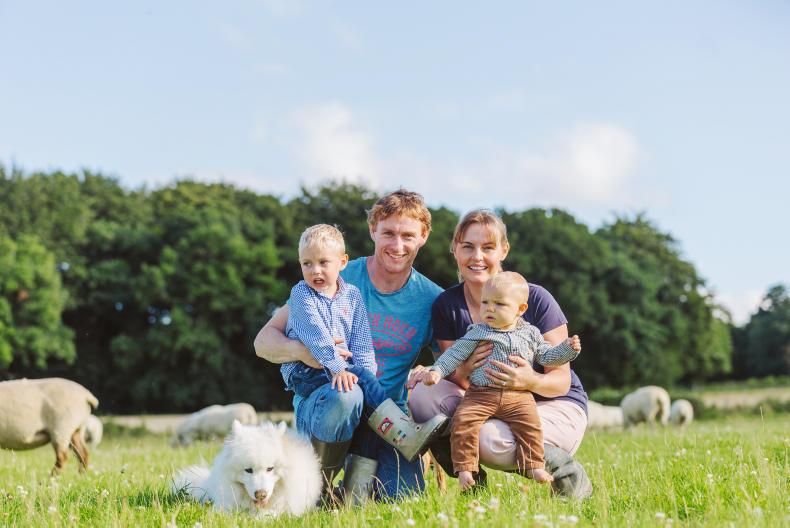




 This is a subscriber-only article
This is a subscriber-only article





SHARING OPTIONS: